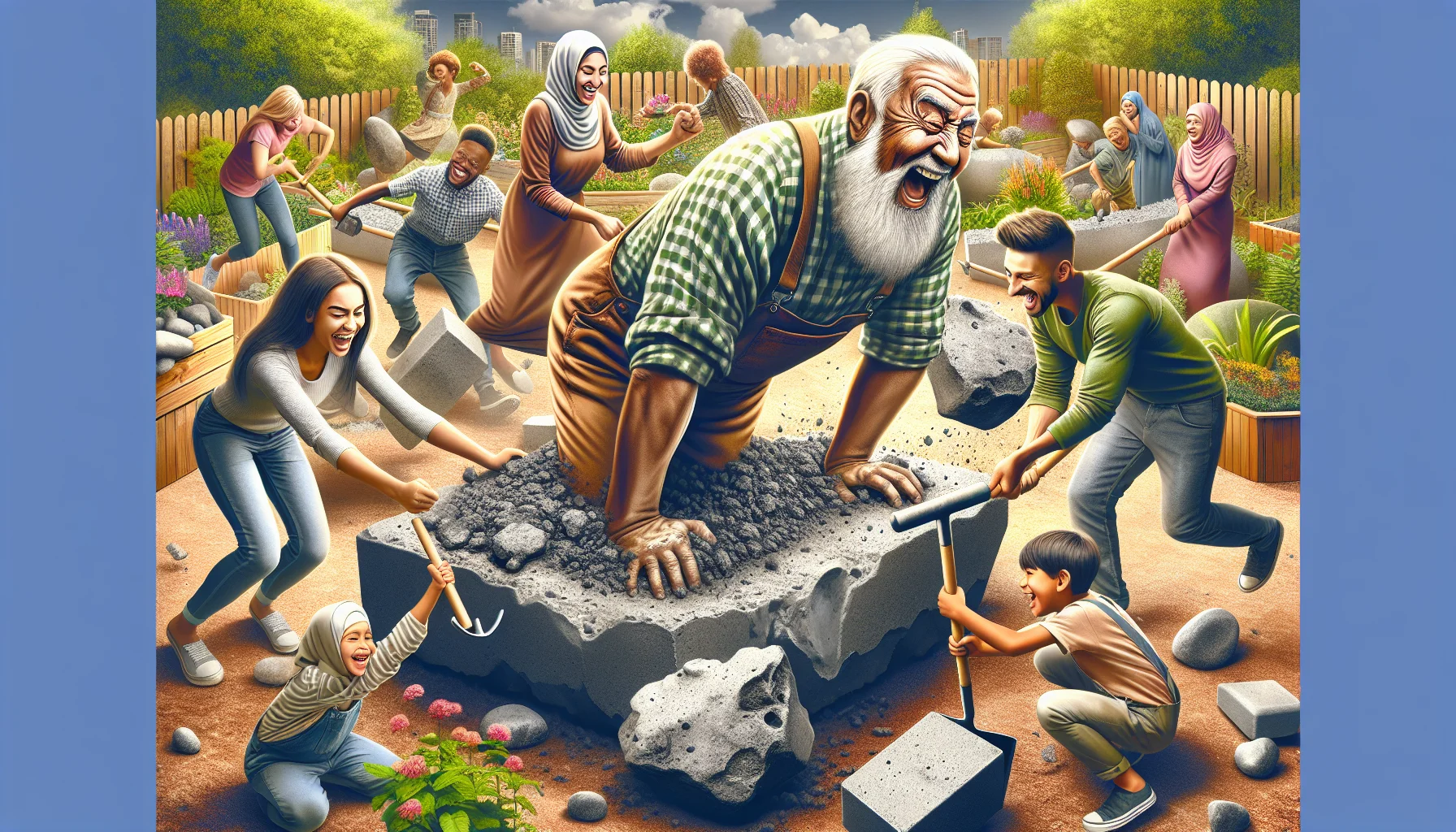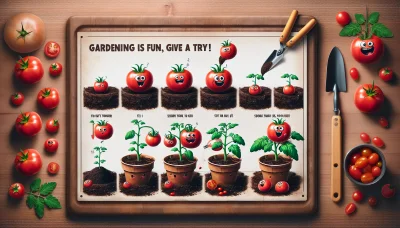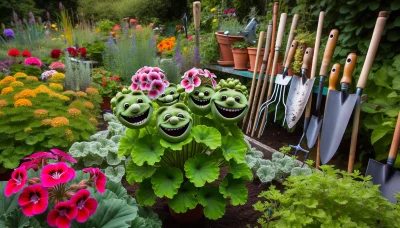Recycling Concrete in the Garden Quiz
Test Your Knowledge
Question of
Recycling Concrete in the Garden
Recycling concrete in garden projects is an innovative approach that combines sustainability with creativity. This concept involves repurposing broken or unused concrete pieces, often from construction debris or old structures, into functional and decorative elements in the garden. By recycling concrete, gardeners and landscapers can reduce waste and minimize the demand for new resources, contributing significantly to environmental conservation. Additionally, this method opens up a realm of creative possibilities, from constructing pathways and retaining walls to crafting unique planters and garden accents. Not only does this enhance the aesthetic appeal of garden spaces, but it also promotes a more sustainable and eco-friendly approach to garden design.
Why Recycle Concrete in Your Garden?
Recycling concrete in your garden is not only a practical approach to landscaping but also a significant step towards environmental conservation. One of the primary benefits of recycling concrete is the reduction of landfill waste. Every piece of concrete reused or repurposed in the garden means less material taking up valuable space in landfills. This is crucial as space in landfills becomes increasingly scarce, and the environmental impact of creating new landfill sites is considerable.
Moreover, recycling concrete conserves natural resources. The production of new concrete requires the extraction of raw materials, such as sand and gravel, from the environment. This process can lead to habitat destruction, water pollution, and other ecological disturbances. By recycling concrete, we can lessen the demand for new materials and help preserve the natural landscapes and the biodiversity they support.
In addition to these environmental benefits, recycling concrete in your garden can also contribute to a unique and aesthetically pleasing outdoor space. Reclaimed concrete pieces can be used for a variety of landscaping projects, including walkways, retaining walls, and decorative features. This not only saves resources but also adds character and history to your garden design.
Creative Ways to Use Recycled Concrete in the Garden
- Walkways: Laying down pieces of recycled concrete to create unique, eco-friendly garden paths.
- Retaining Walls: Stacking recycled concrete pieces to form sturdy, attractive retaining walls for garden beds.
- Planters: Using broken concrete as rustic, durable containers for plants.
- Edging: Defining garden beds and pathways with recycled concrete pieces for a clean, organized look.
- Water Features: Incorporating recycled concrete into the design of ponds, fountains, or waterfalls to add texture and interest.
- Patio Floors: Assembling recycled concrete slabs to create a unique, environmentally friendly patio area.
- Stepping Stones: Using recycled concrete pieces as stepping stones through a lawn or garden for a charming effect.
- Outdoor Seating: Constructing benches or stools from recycled concrete for a sustainable seating option.
- Fire Pit Surround: Laying recycled concrete around a fire pit for a durable, heat-resistant surround.
- Garden Sculptures: Crafting artistic sculptures or garden features from recycled concrete for a touch of creativity.
How to Prepare Recycled Concrete for Garden Use
Recycled concrete can be an excellent, eco-friendly addition to your garden projects, whether you're creating walkways, borders, or even raised beds. However, it's crucial to prepare it properly to ensure it's safe and effective for use. Follow these steps to get your recycled concrete garden-ready.
Step 1: Source Your Recycled Concrete
Start by finding a reliable source of recycled concrete. Many construction and demolition sites have excess concrete they're willing to give away or sell at a low cost. Ensure the concrete is free from hazardous materials like lead paint or asbestos.
Step 2: Clean the Concrete
Once you've sourced your concrete, it's time to clean it. Remove any dirt, debris, or loose particles. A pressure washer can be very effective for this task, but a stiff brush and some soapy water can also do the job.
Step 3: Sort and Size the Material
Sort through the concrete pieces, separating them by size. For garden paths or borders, you might want larger pieces, while smaller chunks can be ideal for drainage layers in planters or raised beds. Break down larger pieces using a hammer or a concrete breaker if necessary.
Step 4: Remove Sharp Edges
Safety is paramount, so take the time to remove any sharp edges from your concrete pieces. You can use a hammer and chisel or a handheld grinding tool. This step is crucial to avoid injuries during installation and regular garden maintenance.
Step 5: Plan Your Layout
Before you start placing your recycled concrete, plan your garden project's layout. Consider the size and shape of the area you're working with, and arrange your concrete pieces on the ground to get an idea of the final look. This step can save you time and effort in rearranging pieces later.
Step 6: Install a Weed Barrier (Optional)
If you're using recycled concrete for paths or patios, installing a weed barrier underneath can be a good idea. This will help prevent weeds from growing through your concrete arrangement. Ensure the barrier is laid out smoothly and covers the entire area you're working on.
Step 7: Lay the Recycled Concrete
Now, you're ready to lay your recycled concrete according to your plan. For paths or patios, ensure each piece is level and sits snugly against its neighbors to prevent shifting. For drainage or raised beds, layer your concrete chunks loosely to allow water to pass through.
Step 8: Fill the Gaps
For a more polished look, fill the gaps between your concrete pieces with sand or soil. This will also help to stabilize them. If you're creating a walking path, consider using a polymeric sand that hardens and prevents weeds from taking root.
By following these steps, you can safely and effectively prepare recycled concrete for various garden projects. Not only will you be giving new life to materials that would otherwise go to waste, but you'll also be adding a unique and durable element to your garden.
Inspirational Garden Projects Using Recycled Concrete
| Project | Description | Benefits |
|---|---|---|
| Concrete Planter Boxes | Old concrete slabs were broken into large pieces to create unique, durable planter boxes for flowers and herbs. | Provides a sturdy, weather-resistant home for plants; adds an industrial aesthetic to gardens. |
| Pathway Paving | Recycled concrete pieces were laid down to form a charming, rustic pathway through a garden. | Enhances garden accessibility; reduces mud and dirt tracking; utilizes large amounts of broken concrete. |
| Garden Benches | Stacked and secured concrete blocks fashioned into simple, functional garden seating. | Offers a permanent, low-cost seating solution; can be easily customized with cushions or painting. |
| Retaining Walls | Used concrete slabs and pieces to construct strong, effective retaining walls for garden terraces or slopes. | Prevents soil erosion; creates more usable gardening space; adds visual interest to garden landscapes. |
| Decorative Garden Edging | Broken concrete pieces arranged to form attractive, irregular edging for flower beds and garden paths. | Defines garden areas clearly; keeps mulch in place; offers a creative outlet for garden design. |
Getting Started with Recycling Concrete in Your Garden
Recycling concrete is a fantastic way to reduce waste and add a unique touch to your garden. The first step in incorporating recycled concrete into your garden is sourcing the material. Look for local construction sites or demolition projects where you can obtain leftover concrete. Often, companies are willing to give away or sell at a low cost these materials to clear the site.
When working with recycled concrete, always consider safety and design aspects. Ensure the concrete pieces are free from sharp edges to prevent injuries. Wearing gloves and safety goggles during handling is a good practice. From a design perspective, think about how the concrete's texture and color will complement your garden. Recycled concrete can be used for various projects, including walkways, retaining walls, or as decorative elements.
For beginners, it's advisable to start small. Perhaps begin by using recycled concrete as a border for your garden beds or as stepping stones. These projects require minimal materials and effort, providing an excellent opportunity to learn and see the results quickly. Starting small will help you gain confidence and inspire more ambitious projects.
Recycling concrete in your garden not only contributes to environmental sustainability but also adds a unique aesthetic appeal. With creativity and safety in mind, you can transform recycled concrete into valuable garden features. So, why not start your recycling project today and see where your imagination takes you?












